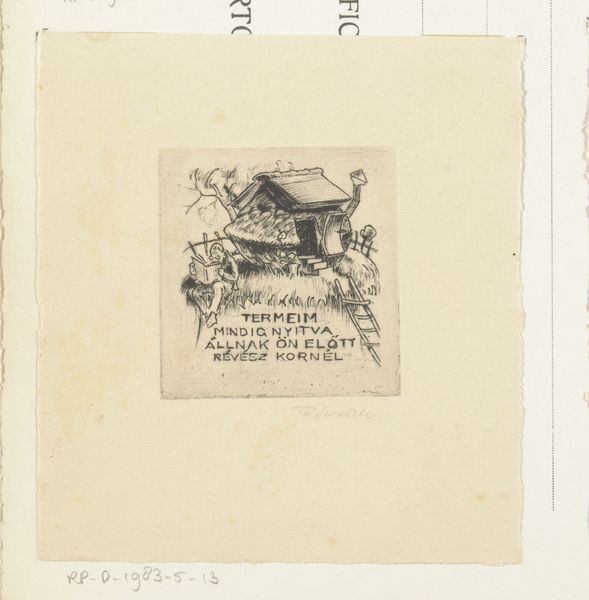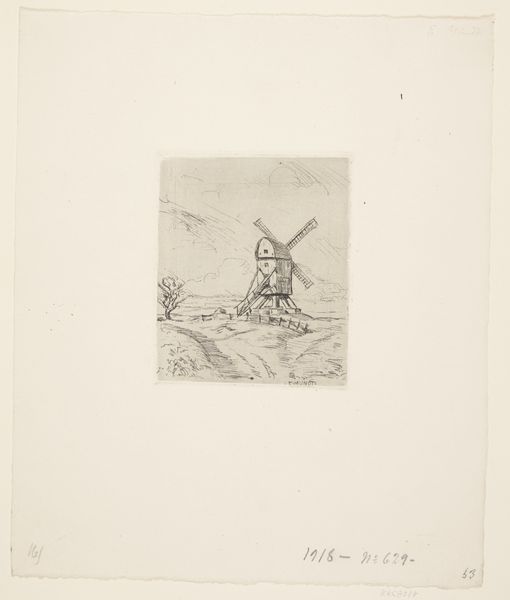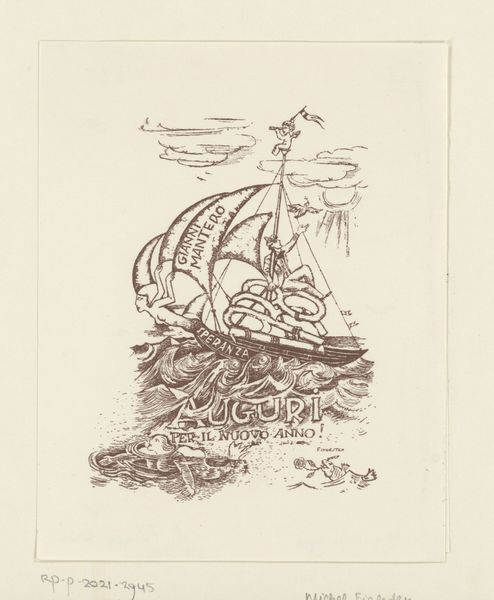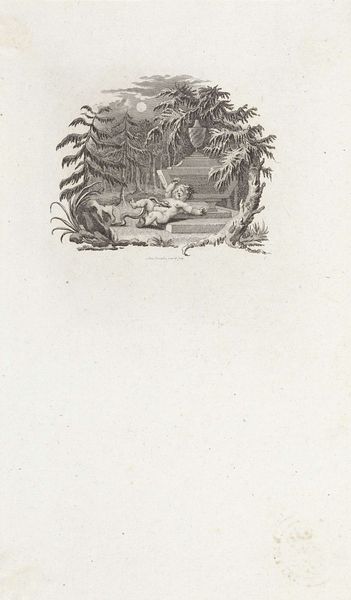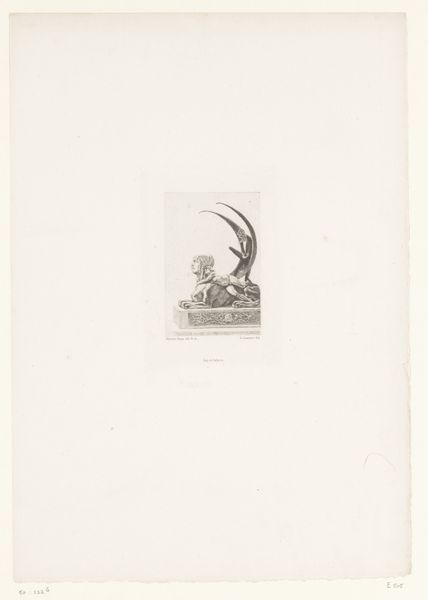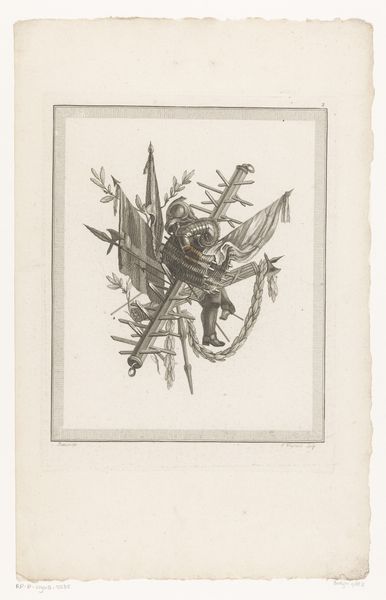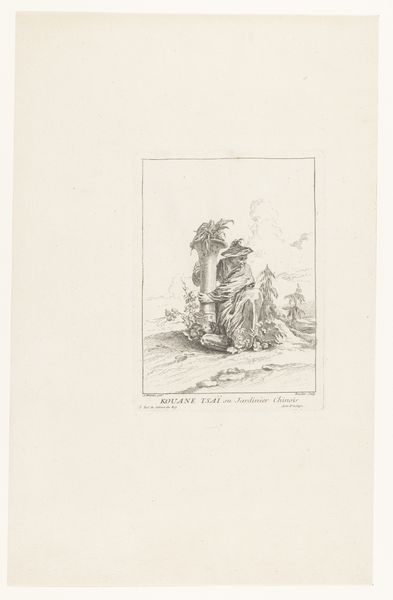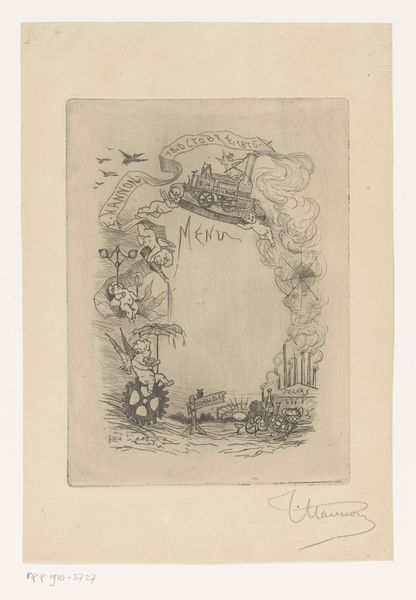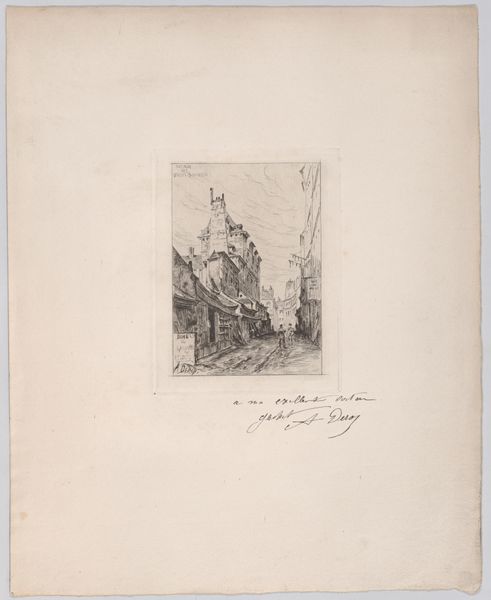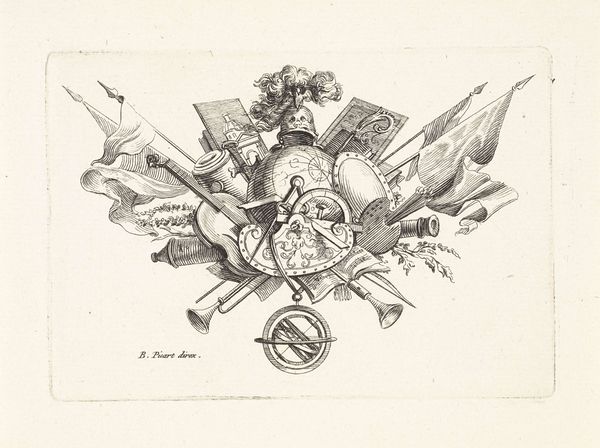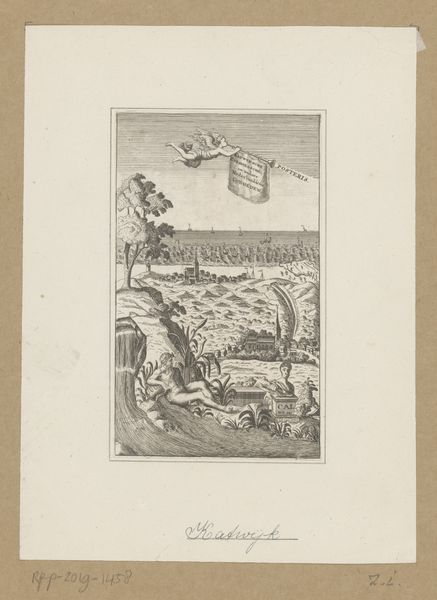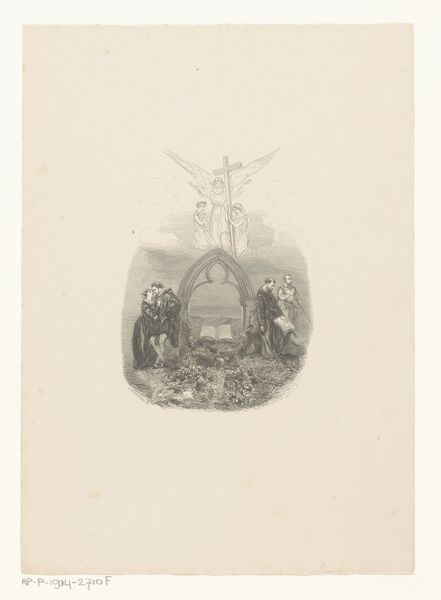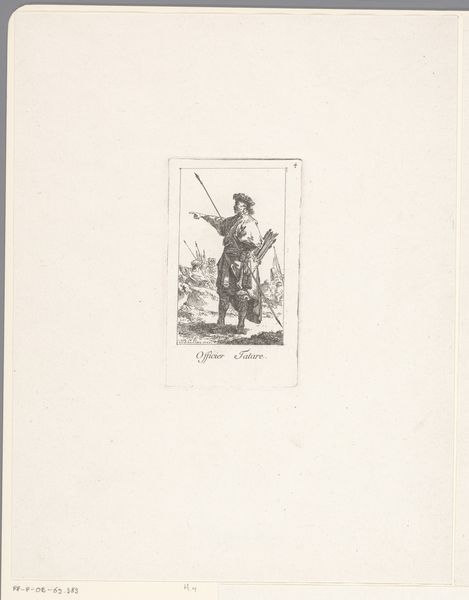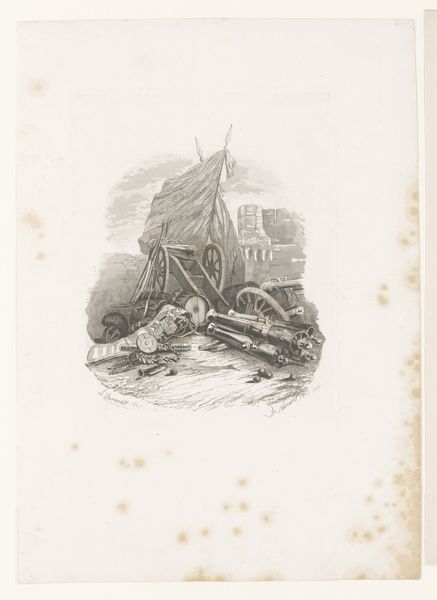
Dimensions: height 134 mm, width 110 mm, height 210 mm, width 142 mm
Copyright: Rijks Museum: Open Domain
Editor: This engraving is entitled *Nieuwjaarswens van György Révész*, which translates to "New Year's Greetings from György Révész." It was created in 1932 by, of course, György Révész. The rendering is just... intriguing! What social or political commentary do you see in this work? Curator: Given the socio-political climate of Europe in the early 1930s, I find it hard not to see a metaphor for the struggles many faced. The boat tossed about in the rough waters of what could be construed as skulls… that doesn't exactly scream smooth sailing. I wonder, what sort of reception would a piece like this garner, presented as a "new year's greeting?" Editor: Well, it's definitely not the Hallmark card equivalent. It almost seems like a warning, doesn't it? Like, "brace yourselves." Could the '1933' on the boat be forecasting tumultuous times to come? Curator: Exactly. And Révész, embedding this 'greeting' within a modernist visual language of symbolism, challenges the conventional, often sanitized, function of art in public life. It’s no longer just decorative; it's a form of critical social engagement. Think about how art institutions, or even just the average person displaying art in their home, becomes a site where these difficult conversations play out. Editor: That’s fascinating. So, displaying or even commissioning such a work wasn't just about aesthetics, but about aligning oneself with a particular worldview, right? Almost like a form of silent protest? Curator: Precisely! And remember, art rarely exists in a vacuum. The history of its production, exhibition, and reception – especially in turbulent times – tells us so much about the complex interplay between art, power, and the public. Editor: I never thought of a simple New Year’s greeting holding so much depth. Now I see it as a commentary on the period. Curator: That’s the beauty of looking at art through a historical lens, it transforms how we understand its role in society.
Comments
No comments
Be the first to comment and join the conversation on the ultimate creative platform.
